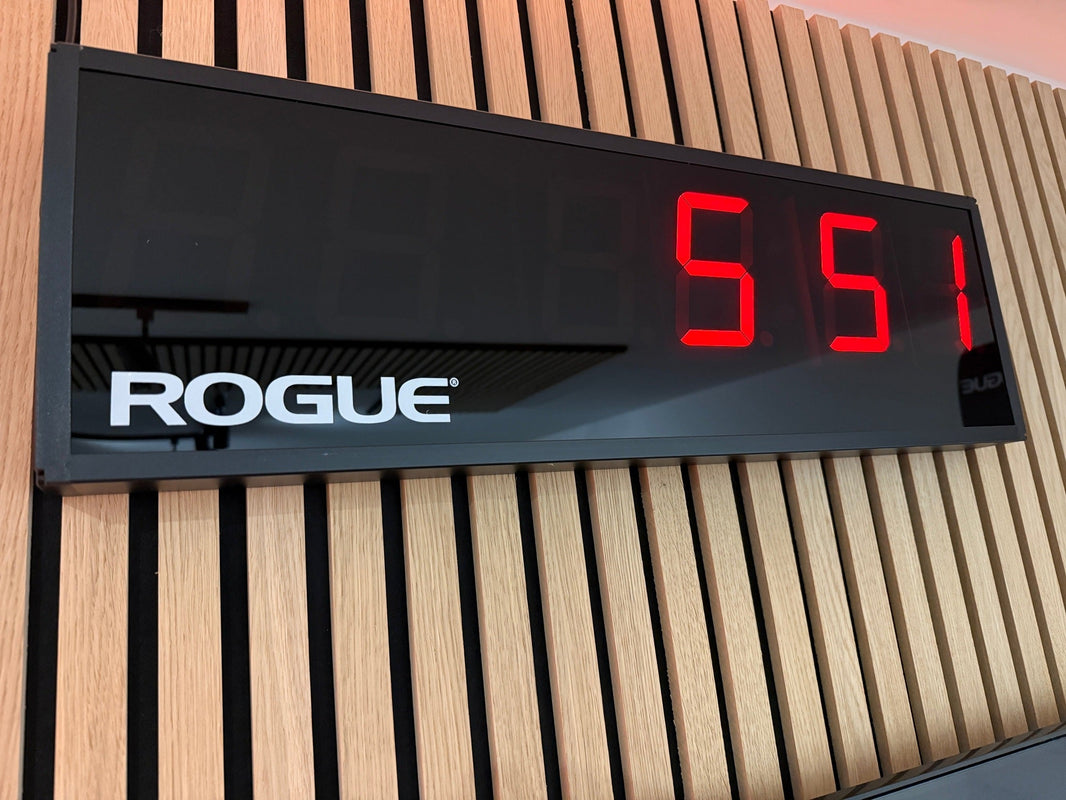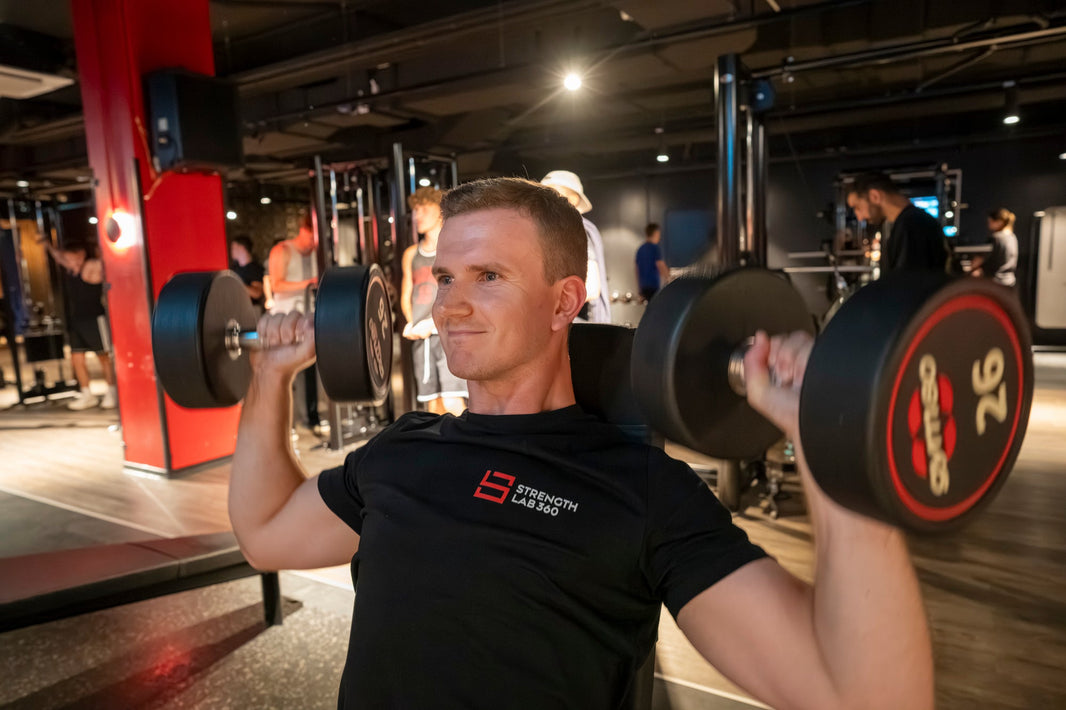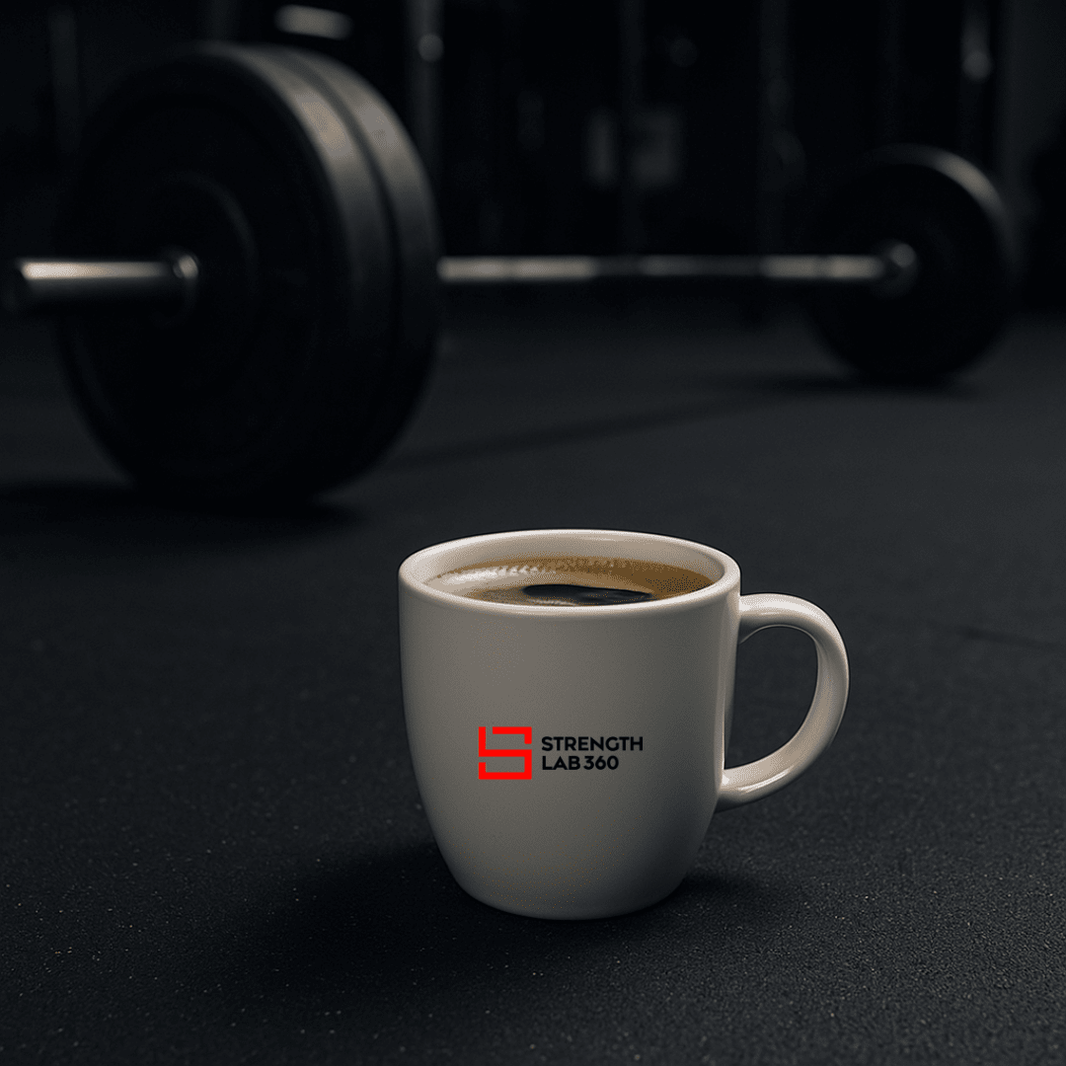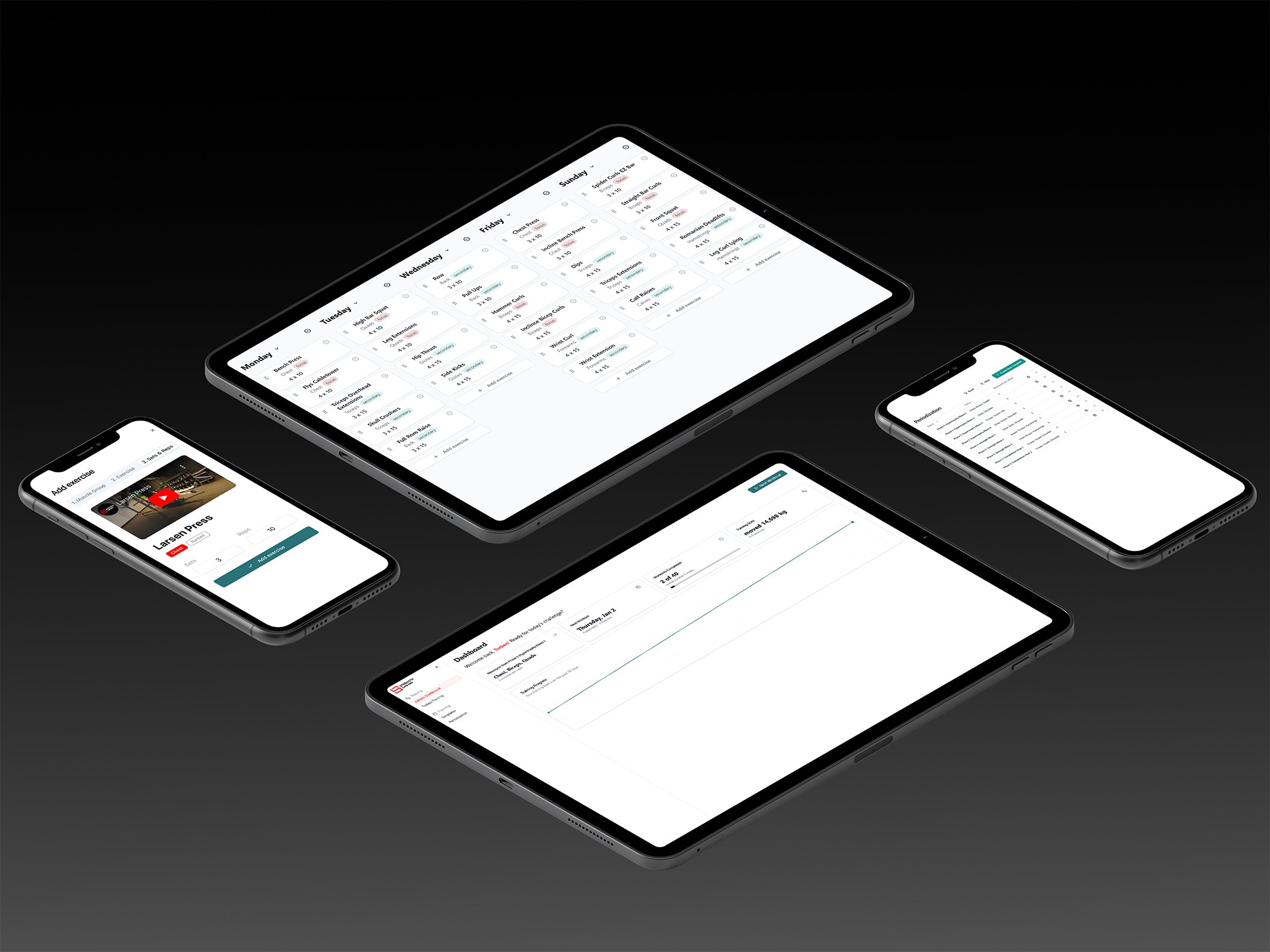Total Daily Energy Expenditure (TDEE) is the total number of calories you burn each day, and it’s a crucial concept for anyone looking to manage their weight or optimize performance. For strength athletes and beginners alike, knowing your TDEE means knowing your maintenance calories – the calorie intake at which you neither gain nor lose weight. In this comprehensive guide, we’ll break down TDEE and its components (BMR, TEF, NEAT, and activity), explain how they contribute to your daily calorie burn, and show you how to calculate your TDEE. By the end, you’ll understand how to adjust your caloric intake to create a calorie deficit or calorie surplus aligned with your goals. Let’s dive in!
Use the StrengthLab360 TDEE Calculator to get instant results for free
What is TDEE and Why Does It Matter?
TDEE stands for Total Daily Energy Expenditure, which is the sum of all the energy your body uses in a day. In simple terms, it’s the total calories you burn every 24 hours maintaining bodily functions, digesting food, and performing all activities (from fidgeting to weightlifting). Your TDEE is essentially your maintenance calories – eat roughly this amount and your weight will stay steady.
For strength athletes, understanding TDEE is especially valuable. It helps in planning nutrition for muscle gain, fat loss, or maintenance:
-
If you consume more than your TDEE (caloric surplus), you’ll gain weight.
-
If you consume less than your TDEE (caloric deficit), you’ll lose weight.
-
Staying at TDEE intake keeps your weight stable (maintenance).
TDEE matters because it provides a personalized benchmark for energy balance. Instead of guessing how much to eat, you can calculate your TDEE and then tailor your diet: add calories above TDEE to build muscle, or cut calories below TDEE to lose fat, all while fueling your workouts appropriately.
Before we get into using it, let’s break down the four key components that make up TDEE: Basal Metabolic Rate (BMR), Thermic Effect of Food (TEF), Non-Exercise Activity Thermogenesis (NEAT), and exercise activity.
StengthLab360 Strength TDEE Calculator
Use the StrengthLab360 TDEE Calculator to get instant results for free
Basal Metabolic Rate (BMR): The Base of Your Calorie Burn
Basal Metabolic Rate (BMR) is the energy your body needs at rest to support vital functions – basically, the calories burned just to keep you alive (breathing, circulating blood, cell production, etc.). BMR is the largest component of TDEE for most people. In fact, research shows BMR typically accounts for about 60–75% of your daily energy expenditure (pubmed.ncbi.nlm.nih.govncbi.nlm.nih.gov). This means the majority of your daily calorie burn happens even before you do any activity, just from your body keeping itself alive.
Key points about BMR:
-
Influencing factors: BMR varies based on body size, body composition, age, sex, and genetics. Individuals with more lean muscle mass have higher BMR because muscle tissue is metabolically active (ncbi.nlm.nih.gov). Younger people also tend to have higher BMR than older individuals, and men often have a slightly higher BMR than women (due to typically higher muscle mass).
-
BMR is constant (at rest): Your BMR is measured under strict conditions (after fasting, fully rested). It doesn’t include calories burned from any movement or digestion. Think of it as the calories your body would burn if you lay in bed all day.
-
BMR and metabolism: When people talk about “fast metabolism” or “slow metabolism,” they often refer to differences in BMR. For example, a larger strength athlete with more muscle might have a BMR of 1800 kcal/day, whereas a smaller individual might have a BMR of 1400 kcal/day.
Because BMR contributes the most to TDEE, increasing your muscle mass can modestly raise your BMR (since muscle tissue burns more calories at rest than fat tissue). However, keep in mind that even large changes in muscle will not double your BMR or anything dramatic – but every bit helps your maintenance calories go further.
Thermic Effect of Food (TEF): Calories Burned from Eating
Every time you eat, your body burns energy digesting and processing that food. This is known as the Thermic Effect of Food (TEF), sometimes called diet-induced thermogenesis. TEF is the smallest component of TDEE, typically accounting for about ~10% of your daily energy expenditure (pubmed.ncbi.nlm.nih.govncbi.nlm.nih.gov). For example, if you eat 2500 kcal in a day, roughly 250 kcal might be burned just through digesting and absorbing that food.
Key points about TEF:
-
Macronutrient differences: Not all foods cost the same amount of energy to process. Protein has the highest thermic effect – about 20–30% of protein calories eaten are burned off as heat during digestion (pmc.ncbi.nlm.nih.govpmc.ncbi.nlm.nih.gov). Carbohydrates have a moderate TEF (~5–10%), and fats have a low TEF (~0–3%). In practical terms, this means high-protein diets slightly increase TDEE because your body works harder to metabolize protein. (This is one reason high-protein diets can aid weight loss – they burn more calories and keep you full.)
-
Meal size and frequency: Larger meals tend to have a higher total TEF than smaller meals (simply because more calories are being processed). However, as a percentage, the effect is relatively consistent. Whether you eat three big meals or six small meals, the total TEF over the day will be similar if total calorie intake and composition are the same.
-
No control required: TEF happens automatically. You don’t consciously “burn” these calories – your digestive system does the work. But you can influence TEF by your food choices (e.g. eating sufficient protein).
While TEF is only around one-tenth of TDEE, it’s still hundreds of calories for most people, and it contributes to your overall calorie burn. Eating mostly nutritious, protein-rich foods ensures you’re getting a bit of a metabolic boost from TEF, which can support your goals modestly over time (pmc.ncbi.nlm.nih.gov).
Non-Exercise Activity Thermogenesis (NEAT): Everyday Movement Calories
Non-Exercise Activity Thermogenesis (NEAT) is the energy you burn through all the unplanned, daily physical activities that aren’t formal exercise. NEAT includes things like walking around the house, typing, doing chores, fidgeting, yard work, and even maintaining posture. It can vary wildly from person to person. For some, NEAT might be as simple as a few hundred calories from light daily tasks; for others (e.g., a manual laborer or an extremely fidgety person), NEAT can be a major portion of daily expenditure.
Key points about NEAT:
-
Variation between individuals: NEAT is the most variable component of TDEE. Scientific findings have shown that NEAT can differ by up to ~2000 calories per day between two people of similar size (pubmed.ncbi.nlm.nih.govpubmed.ncbi.nlm.nih.gov). Someone with a very active job or who is on their feet all day will burn far more through NEAT than someone who sits at a desk all day.
-
Sedentary vs. active lifestyle: If you have a sedentary occupation (like desk work) and minimal movement otherwise, your NEAT will be on the low end. Conversely, if your day is filled with walking, standing, or manual tasks, your NEAT could contribute significantly to your daily calorie burn. For example, taking the stairs, doing household chores, walking the dog, or even pacing while on phone calls can increase NEAT.
-
Weight management and NEAT: NEAT tends to increase when you overeat and decrease when you undereat – it’s one way the body subconsciously regulates energy balance. Some people naturally start moving more when in a surplus (blunting weight gain), while others might unconsciously move less when dieting (blunting weight loss). This adaptability of NEAT partly explains why two people with the same calorie intake can gain or lose weight at different rates.
For strength athletes and others, being aware of NEAT is useful. If you have a very low-NEAT lifestyle, you might need to intentionally program in some extra walking or activity to keep your TDEE (and thus maintenance calories) at a higher level. On the other hand, if you’re very active throughout the day outside of the gym, you may find your TDEE is significantly higher than average, meaning you can eat more while maintaining weight (pubmed.ncbi.nlm.nih.gov).
Exercise and Activity Level: The Impact of Workouts on TDEE
In addition to NEAT, exercise or purposeful physical activity is another variable part of TDEE. Sometimes categorized separately as exercise activity thermogenesis, this is the energy you burn through workouts – whether it’s strength training, cardio, sports, or any planned exercise. Your activity level (how often and how intensely you exercise) will directly affect your TDEE.
Key points about exercise and activity:
-
Exercise energy expenditure: The calories burned through exercise can range widely. A light 30-minute walk might only burn 150 calories, while an intense hour-long weightlifting session or spin class could burn 400–600 calories or more (depending on body size and intensity). If you train multiple times per week, these calories add up and raise your TDEE significantly on training days.
-
Activity multipliers: Because exercise and NEAT together can vary so much, many TDEE calculations use activity level multipliers. For example, a common approach is:
-
Sedentary (little to no exercise): multiply BMR by ~1.2
-
Lightly active (light exercise 1–3 days/week): multiply by ~1.4
-
Moderately active (3–5 days of moderate exercise/week): ~1.55
-
Very active (6–7 days of hard exercise/week): ~1.7
-
Extremely active (intense exercise daily or physical job): ~1.9
These factors estimate how much above BMR your total burn is, including NEAT and exercise. So an athlete with BMR 1600 kcal who trains hard 5 days a week might have a TDEE around 1600 × 1.55 ≈ 2480 kcal/day, whereas a non-exercising individual with the same BMR might have TDEE ~1920 kcal/day.
-
-
Recovery needs: If you’re a strength athlete, remember that more exercise not only burns calories during the activity but can also raise your post-exercise metabolism slightly (EPOC effect) and influence muscle recovery needs. Your body might require additional calories on training days to recover, which is factored into your TDEE average. This is why many athletes eat more on workout days.
-
Avoid double counting: Note that “activity level” covers all physical activity outside of resting. If you have a very active job plus you exercise frequently, that combined effect should be considered. Conversely, if you use a calorie tracking device, be careful not to eat back every calorie it says you burned during workouts – often those calculations already assume an activity level.
In summary, the more active you are, the higher your TDEE. This is empowering: by increasing your activity (through more daily movement or structured exercise), you boost your daily calorie needs. That can allow you to eat more while maintaining weight, or create a larger deficit for fat loss without cutting food intake as drastically. Your activity level is one part of TDEE you have significant control over – unlike BMR, which is largely determined by your physiology, or TEF, which is determined by what you eat.
Maintenance Calories and Energy Balance
Maintenance calories is simply another term for the number of calories equal to your TDEE. At this intake, your body’s energy input equals output, so your weight stays steady. Understanding maintenance is essential for grasping energy balance:
-
Energy balance equation: In basic terms, if Calories In = Calories Out, your weight remains stable. Calories Out is your TDEE (energy expenditure), and Calories In is what you eat. This is the principle of energy balance backed by fundamental physiology. If you consistently eat your maintenance calories, you’ll neither lose nor gain weight in the long run (pubmed.ncbi.nlm.nih.gov).
-
Finding your maintenance: You can identify your maintenance calorie level by tracking your food intake and body weight over a couple of weeks. If your weight stays roughly the same and you were logging, the average daily calories you ate is an approximation of your TDEE. Alternatively, use a calculated TDEE and adjust based on real-world results – if you notice slight weight gain, your true maintenance might be a bit lower than calculated, and vice versa.
-
Daily fluctuations: Remember that day-to-day weight can fluctuate due to water, glycogen, and digestive contents. “Maintenance” means a stable trend over time (e.g., no significant change over a month). Hitting your exact TDEE every single day isn’t necessary; you can be a little over one day and under another. It’s the consistent average that determines weight stability.
-
Metabolic adaptation: Over time, maintenance calories can change. For instance, if you lose weight, your BMR goes down (a smaller body burns fewer calories at rest) and you might unconsciously move less, so your new TDEE will be lower than before. Conversely, gaining muscle or becoming more active raises your TDEE a bit. Always be open to recalibrating your maintenance intake as your body or routine changes.
Knowing your maintenance calories is empowering. It provides a reference point from which you can plan a calorie deficit or surplus. Even if your goal isn’t to change weight, knowing TDEE helps ensure you’re fueling enough to support your activity (especially important for athletes to maintain performance and recovery).
Calorie Surplus vs. Calorie Deficit: Using TDEE for Goals
Once you understand TDEE and maintenance calories, you can intentionally adjust your intake to pursue specific goals:
-
Calorie Deficit (Weight Loss): Eating fewer calories than your TDEE creates a deficit. This forces your body to tap into stored energy (body fat, and sometimes muscle) to make up the shortfall, leading to weight loss over time. A moderate deficit is generally recommended for sustainable fat loss. In practice, a deficit of about 15–20% below maintenance (or roughly 500 fewer calories per day than your TDEE) is often used to target ~1 pound per week of weight loss (pmc.ncbi.nlm.nih.govncbi.nlm.nih.gov). For example, if your estimated TDEE is 2500 kcal, consuming ~2000 kcal/day would likely result in gradual weight loss. Research and clinical guidelines suggest deficits in the 500–750 kcal/day range are effective and safe for most, yielding about 0.5–1 kg of weight loss per week (pmc.ncbi.nlm.nih.gov). Larger deficits will produce faster weight loss but are harder to sustain and can increase muscle loss or fatigue, especially for strength athletes.
-
Calorie Surplus (Weight Gain): Eating more calories than your TDEE creates a surplus. This extra energy can be used by the body to build muscle (if combined with resistance training) or is stored as fat. Athletes looking to gain muscle mass (“bulking”) often aim for a small calorie surplus above maintenance so that weight is gained primarily as muscle with minimal fat. A common strategy is a surplus of about 10–20% above TDEE. In practice, that might be +250 to +500 calories per day for many people. This level of surplus tends to produce slow, steady weight gain of perhaps 0.25–0.5% of body weight per week (pubmed.ncbi.nlm.nih.gov pubmed.ncbi.nlm.nih.gov). For instance, if your maintenance is 2800 kcal, eating around 3100–3300 kcal could be a lean bulking approach. Rapid weight gain from a very large surplus often leads to disproportionate fat gain, so bigger is not always better. Research on strength athletes confirms that a conservative surplus is more efficient for muscle growth, whereas an excessive surplus mainly increases fat storage (pubmed.ncbi.nlm.nih.gov).
-
Body recomposition: In some cases (typically beginners or those returning from a layoff), it’s possible to lose fat and gain muscle at the same time by eating roughly at maintenance calories with high protein and a good training program. This isn’t exactly a surplus or deficit, but rather a recomposition approach. However, for most intermediate lifters, it’s more effective to focus on one goal at a time – use a deficit to cut fat while preserving muscle, or a surplus to build muscle – and alternate phases as needed.
Whether you choose a deficit or surplus, track your progress. If you’re not seeing the expected weight change after a few weeks, you may need to adjust the calorie offset. For example, some individuals may need a slightly larger deficit to consistently lose weight, especially if NEAT adapts downward during dieting. Or if you’re “bulking” and not gaining weight after a month, your surplus might not actually be a surplus – you might need to eat more. Use your TDEE as a starting point, then fine-tune as you observe changes.
(Remember: rapid weight changes can also be water or glycogen shifts. Aim for steady, gradual changes for best results, especially when preserving muscle or performance.)
How to Calculate Your TDEE
Knowing the theory is great, but how do you actually figure out your own TDEE? There are a few methods, and we’ll go through a straightforward approach:
1. Estimate your BMR (Basal Metabolic Rate). This can be done with a formula. One of the most widely used BMR formulas is the Mifflin-St Jeor equation, which has been found to be fairly accurate for most people (pubmed.ncbi.nlm.nih.gov). The Mifflin-St Jeor formulas are:
-
Men: BMR = 10 × weight (kg) + 6.25 × height (cm) – 5 × age (years) + 5
-
Women: BMR = 10 × weight (kg) + 6.25 × height (cm) – 5 × age (years) – 161
For example, a 30-year-old male strength athlete who is 180 cm tall and weighs 80 kg would have:
BMR ≈ 10×80 + 6.25×180 – 5×30 + 5 = 800 + 1125 – 150 + 5 = 1780 kcal/day (approximately).
These equations give a reasonable estimate of the calories your body needs at rest (pubmed.ncbi.nlm.nih.gov). There are other formulas (like the older Harris-Benedict equation, or newer ones that factor in lean mass), but Mifflin-St Jeor is a solid starting point.
2. Factor in your activity level. Next, decide which activity multiplier (sometimes called Physical Activity Level, PAL) best matches your lifestyle (including exercise and NEAT as discussed):
-
Sedentary (little to no exercise, desk job) – multiply BMR by ~1.2
-
Lightly active (light exercise 1–3 days/week) – multiply by ~1.4
-
Moderately active (moderate exercise 3–5 days/week) – multiply by ~1.55
-
Very active (hard exercise 6–7 days/week or very active job) – multiply by ~1.7
-
Extremely active (intense exercise daily and physical job) – multiply by ~1.9
Be honest about your activity. If you do strength training 3 times a week and are otherwise fairly sedentary, “moderately active (1.55×)” is likely appropriate. If you’re constantly on your feet at work and also training hard, you might fall into “very active” or beyond.
3. Calculate TDEE. Multiply your BMR from step 1 by the factor from step 2. This gives your Total Daily Energy Expenditure estimate. Using the earlier example (BMR ~1780 kcal) for a moderately active individual (factor ~1.55):
TDEE ≈ 1780 × 1.55 = ~2760 kcal/day.
This 2760 kcal would be the estimated maintenance calories for that person – i.e., eating around this daily amount should maintain his weight.
4. Adjust as needed. Remember, these formulas give estimates. Real-world testing is important. Track your calorie intake and weight for a few weeks:
-
If you eat near the calculated TDEE and your weight remains stable, the estimate was accurate.
-
If you’re gaining weight on that intake, it suggests your actual TDEE might be lower than estimated (or you overestimated activity level). Adjust down a bit.
-
If you’re losing weight despite aiming for maintenance, then your actual TDEE is higher than estimated (or you underestimated activity). Adjust upward.
Also, use common sense relative to your body: extremely muscular individuals or those with very high body fat might get less accurate results from these equations. In such cases, using an equation based on lean body mass, or doing an actual metabolic test, can be more precise. But for most, the above method is close enough.
Finally, note that there are many online TDEE calculators (which essentially do the above steps for you). They can be convenient – just be sure to use one that includes all components (BMR and activity) and gives a sensible result. Avoid any calculator that doesn’t ask for activity level, because it would only be spitting out your BMR.
Putting It All Together and Next Steps
Understanding your TDEE gives you a powerful tool to manage nutrition:
-
If your goal is fat loss, create a calorie deficit below TDEE (while keeping protein high to preserve muscle).
-
If your goal is muscle gain, eat a surplus above TDEE and pair it with progressive strength training.
-
If your goal is to maintain and fuel performance, ensure you eat roughly at TDEE with a balanced diet, adjusting intake on training days if needed.
Make sure to periodically reassess your TDEE as your weight or activity level changes. An increase in training volume or adding muscle mass will raise TDEE; significant weight loss or a new desk job could lower it. TDEE isn’t a static number for life – it adapts with you.
Use your TDEE to plan your nutrition now. With the knowledge of your maintenance calories, you can take control of your diet. No more blindly following generic meal plans – you have a personalized calorie target. Whether you’re a beginner just starting out or an intermediate strength athlete fine-tuning your regimen, let TDEE be your compass for calorie planning. Combine it with quality food choices and proper training, and you’ll be on the optimal path to your goals. Now that you know your numbers, it’s time to put them into action. Plan your nutrition around your TDEE and go crush those goals!
References:
-
Popson MS, Dimri M, Borger J. Biochemistry, Heat and Calories. StatPearls [Internet]. StatPearls Publishing; 2023 Jun 12. PMID: 30855878. [PubMed]
-
Mifflin MD, St Jeor ST, Hill LA, et al. A new predictive equation for resting energy expenditure in healthy individuals. Am J Clin Nutr. 1990;51(2):241-247. PMID: 2305711. [PubMed]
-
Levine JA. Nonexercise activity thermogenesis (NEAT) – liberating the life-force. J Intern Med. 2007;262(3):273-287. PMID: 17697152. [PubMed]
-
National Institutes of Health. Clinical Guidelines on the Identification, Evaluation, and Treatment of Overweight and Obesity in Adults – The Evidence Report. Obes Res. 1998;6 Suppl 2:51S-209S. PMID: 9813653. [PubMed]
-
Iraki J, Fitschen P, Espinar S, Helms E. Nutrition recommendations for bodybuilders in the off-season: a narrative review. Sports (Basel). 2019;7(7):154. PMID: 31247944. [PubMed]
-
Westerterp-Plantenga MS, Nieuwenhuizen A, Tomé D, et al. Dietary protein, weight loss, and weight maintenance. Annu Rev Nutr. 2009;29:21-41. PMID: 19400750. [PubMed]







